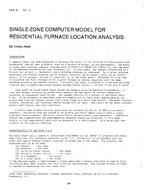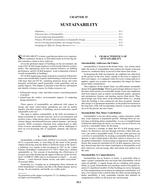Our review of indoor particulate concentrations, air flows and filter effectiveness showed that considerable amounts of these particulates accumulate and build up between the fins of heat exchanger coils, typically used for unitary air conditioners, air-to-air heat pumps and condensing furnaces.
Measured retention of ASHRAE test dust and corkboard dust indicated that finned coils can retain particulates more effectively than common lint or “dust stop” filters. The retained particles may build up a coating on the coil fins at such a rate that the pressure drop across the coil doubles in 4 to 7 years. Among the filters we analyzed, we found that high efficiency air cleaners of the electrostatic type most effectively reduced this buildup rate, by factors of up to 10, with low pressure drop penalty. This involved air cleaner particle retention efficiencies of up to 95%, as measured according to ASHRAE Standard 52-76, Initial Atmospheric Dust Spot Test. This type of coil protection, according to our results, can extend the time for troublesome buildup beyond the anticipated product life of HVAC equipment.
Relating the particulate buildup to heat exchanger performance (i.e. actual capacity) provides a means to evaluate the associated energy use implications. By using high efficiency air cleaners, operating cost savings result from avoided coil cleaning costs and reduced energy consumption of the AC or heat pump to maintain equal comfort levels. These preliminary savings, which depend on climate, indoor air particulate concentration, fin spacing, relative coil capacity, fan operating time, filter/cleaner efficiency and maintenance practices, are reported here.
Units: SI
Citation: Symposium, ASHRAE Transactions, 1986, vol. 92, pt. 1B, San Francisco
Product Details
- Published:
- 1986
- Number of Pages:
- 12
- File Size:
- 1 file , 1 MB
- Product Code(s):
- D-SF-86-09-4


